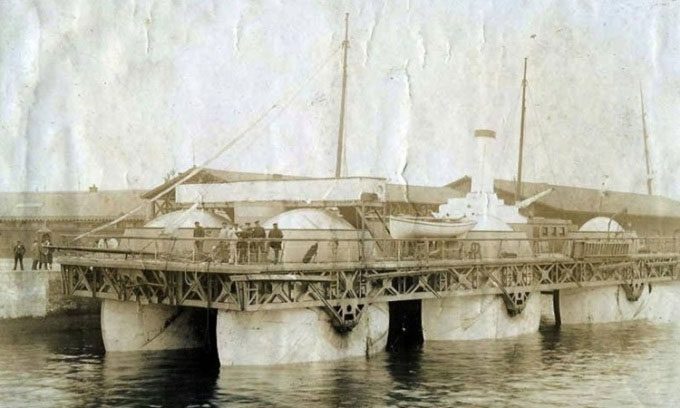The Rolling Ship Model That Cost $100,000 by a 19th Century French Inventor That Performed Worse Than Expected and Went Unwanted.
From 1892 to 1893, French inventor Ernest Bazin applied for a patent for an unconventional ship design. Instead of gliding across the water like traditional boats, Bazin aimed to minimize water contact, thereby overcoming friction with an integrated rolling wheel design. After several years of experimenting with a scale model of the rolling ship at 1/25th its actual size, Bazin was ready to launch his invention, according to Amusing Planet.

Ernest Bazin’s failed ship model. (Photo: Amusing Planet).
In December 1893, Bazin collaborated with his brother Marcel to establish the Societe en Participation du Navire-Express-Rouleurs Bazin, an association focused on developing rolling ships. Two years later, the Bazin Societe Anonyme for Research and Exploitation of Rolling Ships was officially founded in Paris to promote Bazin’s concept. Concurrently, construction of the first rolling ship began at the Cail shipyard in Saint-Denis.
The vessel featured a rectangular deck measuring 86 meters in length and 12 meters in width. The rectangular hull was elevated above the water by the buoyancy of six hollow rolling wheels, each with a diameter of 12 meters and a thickness of 3.6 meters. Each pair of wheels was powered by a 50-horsepower engine. Under normal conditions, they were submerged only one-third underwater.
Bazin predicted that his ship could reach speeds of about 33 km/h, and even 37 km/h at full power. In contrast, a conventional ship with a similar structure and power could only achieve half that speed. The Bazin, equipped with a 10,000-horsepower engine, was designed to carry an additional 600 tons of cargo at 32 knots across the Atlantic. Compared to that, steamships typically required 30,000 horsepower to reach 37 km/h with less cargo capacity.
Bazin also anticipated that the design could save a significant amount of fuel, estimating that this model would consume 800 tons of coal to cross the Atlantic, much lower than the 3,000 to 4,000 tons used by conventional passenger ships. The inventor claimed the ship would enhance safety, as in the event of a collision, at least one pair of wheels would remain intact, allowing the ship to continue moving until it reached the next port.
Bazin was confident that tests in Rouen and on the Thames would be successful. He named the ship “Ernest Bazin” after himself and announced plans to build a larger vessel with four pairs of rolling wheels for transoceanic journeys. However, when the “Ernest Bazin” was tested in the English Channel, it operated unsteadily and struggled with propulsion. The wheels collected so much water that they slowed the ship down instead of propelling it forward. Contrary to the predicted speed of 37 km/h, the ship only reached a maximum speed of 13 km/h.
Ernest Bazin passed away shortly after in January 1898, disheartened. Both Bazin associations dissolved in that same year. The $100,000 ship was publicly offered for sale in 1899 in Liverpool, but no one showed interest in buying it. Ultimately, the ship was dismantled.
- Discovering Secrets from the Tomb of Liang Shanbo, the Truth About the Legendary Love Story with Zhu Yingtai is Surprising!
- The Real-Life ‘Werewolf’: Extraordinary Physique, Aggressive, Attacks Even Polar Bears
- The Universe Could Be Over 15 Million Times Larger Than What We Currently Think of as the Observable Universe!


















































